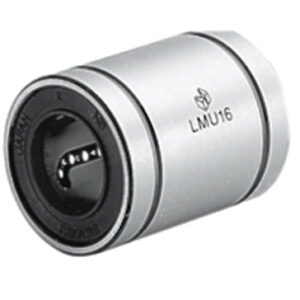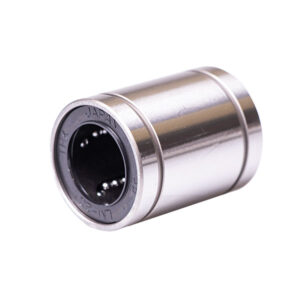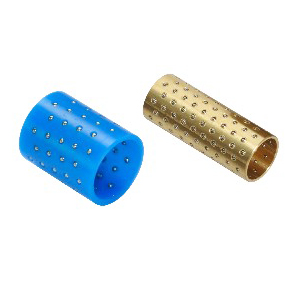Oilless Bushing
Gunri oilless bushings provide a reliable, low-maintenance solution for a variety of industrial applications. Their self-lubricating design, high load capacity, and low friction characteristics make them a valuable choice for optimizing machinery and equipment performance.
Description
Oilless bushings, also known as self-lubricating bushings, are a type of bearing designed for applications where traditional lubrication may not be practical or where maintenance-free operation is essential. These innovative bushings offer a range of benefits:
Self-Lubricating: Oilless bushings are engineered with solid lubricants, such as graphite or PTFE, embedded in the material. This self-lubrication mechanism ensures smooth, low-friction operation, reducing the need for external lubricants.
Maintenance-Free: One of the key advantages of oilless bushings is their maintenance-free nature. They eliminate the need for constant re-lubrication, making them ideal for applications in hard-to-reach or sealed environments.
High Load Capacity: Despite their compact size, oilless bushings can handle substantial loads. They are suitable for a wide range of industrial applications, from machinery to automotive components.
Low Friction: The solid lubricants reduce friction, resulting in smooth and precise movement. This is particularly valuable in applications requiring high precision and minimal wear.
Wide Material Selection: Oilless bushings come in various materials to suit different operating conditions. Common options include bronze, steel-backed, and plastic composite materials.
Versatility: These bushings find applications in industries like automotive, aerospace, industrial equipment, and more, where reliable, maintenance-free operation is critical.
Types of oilless bushings:
- Composite Bushings: Composite oilless bushings consist of a metal backing or shell and a liner made of a composite material that incorporates lubricating elements. These bushings provide excellent wear resistance and low friction, making them suitable for a wide range of applications.
- Metal-Polymer Bushings: Metal-polymer oilless bushings are typically made of a metal shell with a thin layer of a polymer material bonded to the inner surface. The polymer layer contains solid lubricants, such as PTFE (polytetrafluoroethylene) or other proprietary compounds, which provide self-lubricating properties. These bushings offer low friction, high wear resistance, and good load-carrying capacity.
- Plastic Bushings: Plastic oilless bushings are made entirely of plastic materials, such as nylon, acetal, or other polymers. These bushings are self-lubricating and are known for their resistance to chemicals and corrosion. They are often used in applications where metal bushings might not be suitable due to environmental factors.
- Sintered Bronze Bushings: Sintered bronze oilless bushings are manufactured by compressing and sintering powdered bronze material. These bushings can be impregnated with oil or other lubricants to enhance their self-lubricating properties. They are commonly used in applications where high temperatures or heavy loads are involved.
- Solid Polymer Bushings: Solid polymer oilless bushings are made of a single, solid polymer material, such as PTFE or ultra-high-molecular-weight polyethylene (UHMWPE). These bushings offer low friction, excellent chemical resistance, and are often used in food-grade or pharmaceutical applications.
- Roller Bearings: Roller bearings are a type of oilless bushing that incorporates cylindrical rollers instead of a sliding surface. Roller bearings offer higher load-carrying capacity and are often used in applications with heavy radial loads.
- Thrust Bearings: Thrust bearings are designed specifically for axial (thrust) loads and are commonly used in applications where rotational motion needs to be maintained with minimal friction in the axial direction.






